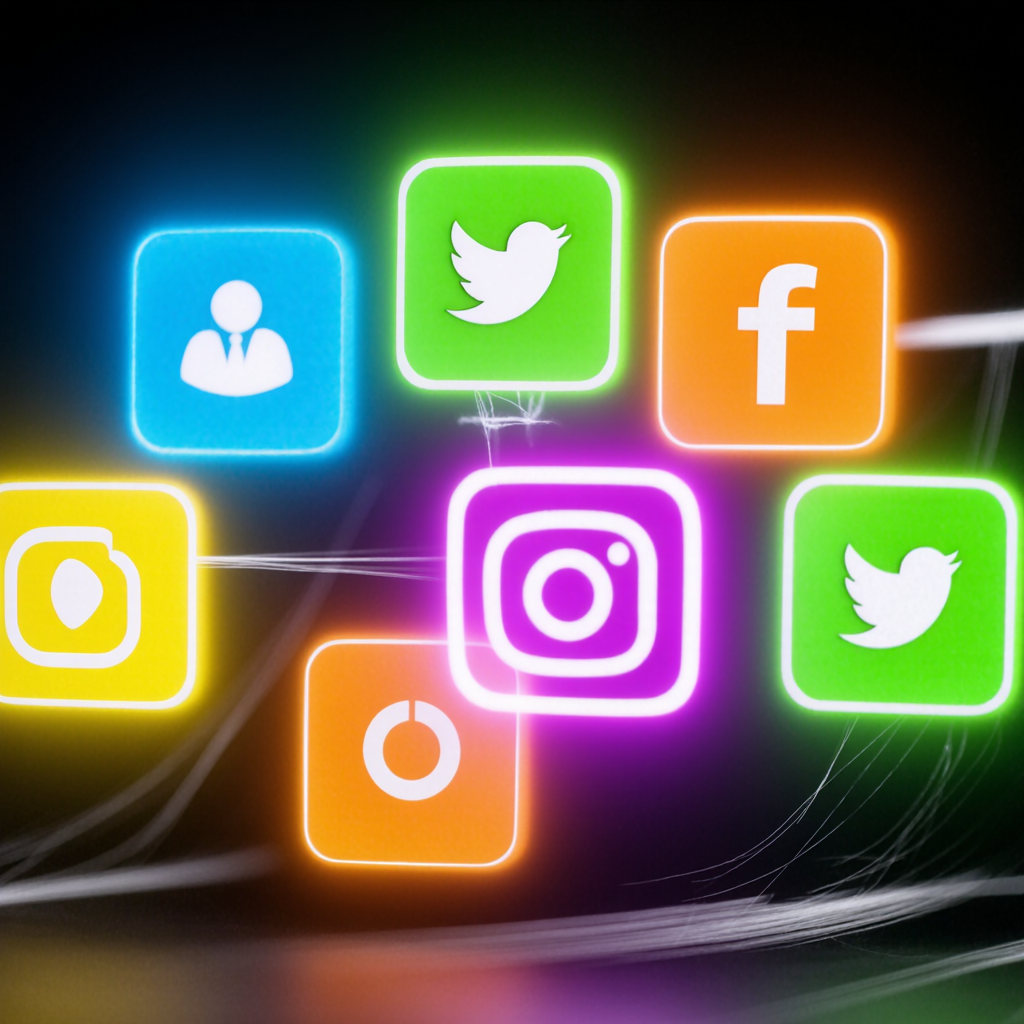Why you need an unsubscribe strategy.
You need to develop an unsubscribe plan for a better strategy
Confession time!
I recently deleted over 35,000 unread e-mails from my inbox.
To do this, I often used the handy unsubscribe link on the sender line.
E-mail providers are increasingly making it easier for their customers to unsubscribe from newsletters and other subscriber e-mails.
In Gmail, when a subscriber has not opened any messages from the sender after 30 days, a notification appears asking if they wish to unsubscribe.
“Unsubscribe from [nom de la newsletter]? You have not opened any messages from this sender in the last month”, it reads. The subscriber can choose “no thanks” or “unsubscribe”.
These automatic unsubscribe messages are a godsend for people managing overloaded inboxes.
But are they good for your email marketing database?
Are unsubscribe prompts good for email marketing?
Unsubscribes generally help to improve open rates.
It’s a simple calculation.
If 250 of your 1,000 subscribers open an e-mail, the open rate is 25%.
Let’s say 100 subscribers unsubscribe via the automatic prompt.
Now, if 250 of your 900 subscribers open the e-mail, your open rate is 27.7%.
If you focus solely on the total number of subscribers, unsubscribing is not a good thing.
But it’s a bad thing anyway if the number of subscribers is the only measure that counts.
The number of subscribers alone is little more than a vanity metric.
Open rates and click-through rates are better indicators of how subscribers use content.
Email open or click-through rates are better indicators of how subscribers are using content, according to @AnnGynn via @CMIContent.
But that doesn’t mean you should ignore unsubscribes.
Sometimes, appearing in a subscriber’s inbox – even if they don’t read the e-mail – can contribute to brand awareness.
It can even serve as a reminder that sends people straight to your website. Sometimes, recipients who haven’t opened them may be interested in your content but have been too busy to open yours.
Let’s see how you can help these people stay subscribed, or unsubscribe if they’re not interested.
(But before we do, let’s set this rule of thumb: your e-mails should provide quality content that your subscribers are likely to want).
Make subscribers feel welcome from the outset
The risk of unsubscribing begins with your first correspondence with a new subscriber.
By establishing a relationship right from the start, readers should be less inclined to leave you.
Think of the confirmation e-mail as your welcome mat.
Explain to subscribers what they’ll find in your e-mails and invite them to join in the conversation.
Ann Handley does it very well with Total Annarchy – and it’s paid off.
The twice-weekly e-newsletter has reached over 50,000 subscribers since its launch in 2018.
The subject line of the newsletter confirmation email reflects the casual, friendly tone of the email content.
After a waving hand emoji, it encourages opening with this simple message: “Welcome, I have a question for you.”
From the very first line of the e-mail, Ann creates a personal interaction without needing to include the recipient’s name.
“Hi friend!” she writes.
“Congratulations, you’re the newest Total Annarchy subscriber! Thank you!”
After explaining what to expect from the newsletter, she asks her questions:
“Why did you subscribe to my newsletter? What do you hope to learn? Your answer will help me get to know you a little better so I can offer you real value in return. Let me know by clicking reply.”
Recipients who wish to answer her questions can click “reply” or write to her directly, since she uses her real e-mail address instead of the unfriendly DONOTREPLY that some marketers inexplicably use by default.
You might think that this personal approach to greeting only makes sense for Total Annarchy because it’s a newsletter directly from one person.
But think again.
Brands can do the same.
Total Annarchy’s welcome email from @AnnHandley drives engagement that would never trigger an @Gmail unsubscribe request, says @AnnGynn via @CMIContent.
Give your registration confirmation e-mails a human touch.
Send them from an individual, not the brand.
Make your new subscribers feel welcome by explaining what they’re about to receive and starting a conversation with them.
(Most will never respond, but those who do will be impressed when they receive your reply. You will send a reply, won’t you?)
TIP: Engage your subscribers right from the start.
Ask them to move your e-mail from the “Promotions” tab or a similar tab and place it directly in their inbox.
Ann provides instructions on how to do this in Gmail and Apple Mail in the postscript to the welcome e-mail.
Here’s how she presents the request for Gmail, in her characteristically friendly and funny style:
P.S. Gmail users: This newsletter may be redirected to the “Promotions” tab.
(You can redirect it by dragging the newsletter to your main tab.
Gmail will then ask you if you want to make this change permanent.
You can then raise your fist in the air and shout “HECK YEAH GOOGLE GODS.
Apple mail users: Tap on the e-mail address at the top of this e-mail and “Add to VIPs”.
This guarantees delivery.
P.P.S. Below are my top five posts of all time.
I hope you enjoy them.

You know the last time someone opened your e-mail (thanks to your e-mail marketing tool).
And you know that Gmail knows it too.
Get a head start on the invitation to unsubscribe after 30 days.
Ask the inactive subscriber if they’d like to stay.
Convince & Convert sends this e-mail with the subject line “Are we boring you?”.
***Note that the original line mentions the name of a person (Jay Baer, founder of Convince & Convert), not a brand.
The note, signed by Jay, reads in part as follows:
Just a quick note because you had at one time signed up to receive emails from us here at Convince & Convert.
But it’s been a while since you’ve opened an email from us, and we miss you!
We’re in the process of removing people from our list who no longer want to receive emails from us about anything to do with content marketing and customer experience.
Jay then gives instructions on how to stay on the list, confirm preferences, unsubscribe and provide feedback.
Sending this type of e-mail may seem counter-intuitive.
But it offers the recipient options that are beneficial to both them and you.
If he unsubscribes immediately, your e-mail list will be cleaner.
If he clicks on the “Confirm how often you’d like to hear from us” link, you have a re-engaged subscriber (and a data point on e-mail frequency).
The tone of Convince & Convert’s e-mail is friendly, so recipients are less likely to take it as a warning.
Jay and the Convince & Convert team want to tailor their correspondence to the recipient’s needs and preferences.
If subscribers don’t respond to this attempt, send another “last call” e-mail a week to 10 days later.
Let them know that you respect their lack of interest and will remove them from the list within two weeks.
Of course, you’ll want to include a last-chance stay option.
If they don’t take it, delete them.
Your list will be cleaner and your engagement figures should reflect it.
Managing Editor chooses to send its last-chance e-mail to subscribers who haven’t opened it in six months.
It keeps the text and image fun and light.
After all, “Free me” is excellent opt-out language.
Although recipients can make a choice, the message conveyed indicates that they will be unsubscribed if they don’t (and the editorial management will have a cleaner list).
Frequency is the main reason people opt out of e-mail.
A survey in 2020 revealed that more than half of those questioned said they had unsubscribed because e-mails were too frequent.
(Daily mailings irritated 34% of those surveyed. Once a week bothered only 17%).
Even if you asked the frequency question when someone signed up, ask them again before they unsubscribe.
Convince & Convert asks subscribers:
- How often do they want to receive an e-mail from the company (twice or more a week, once a week or once a month).
- Topics of interest (content marketing, social media, digital/email/analytics, etc.)
- The sector in which they work
By offering similar choices, you can send e-mails when your content is relevant to the subscriber (as long as it doesn’t exceed the frequency they’ve requested).
Related content hand-picked: Is Google AMP worth it for your e-mail marketing?
Will they stay or go?
Email remains one of the main distribution tools for content marketing.
In 2022, a CMI study found that 67% of B2C marketers and 69% of B2B marketers sent newsletters by email.
If you’re among those who do, you need to develop an unsubscribe plan.
Don’t bury the option at the end of the email and think you’re done.
Welcome your subscribers from the very beginning of their relationship with you.
Reach out to them when their activity declines.
Your e-mail list will be cleaner, your recipients will be more engaged and your e-mail marketing will be more effective.












